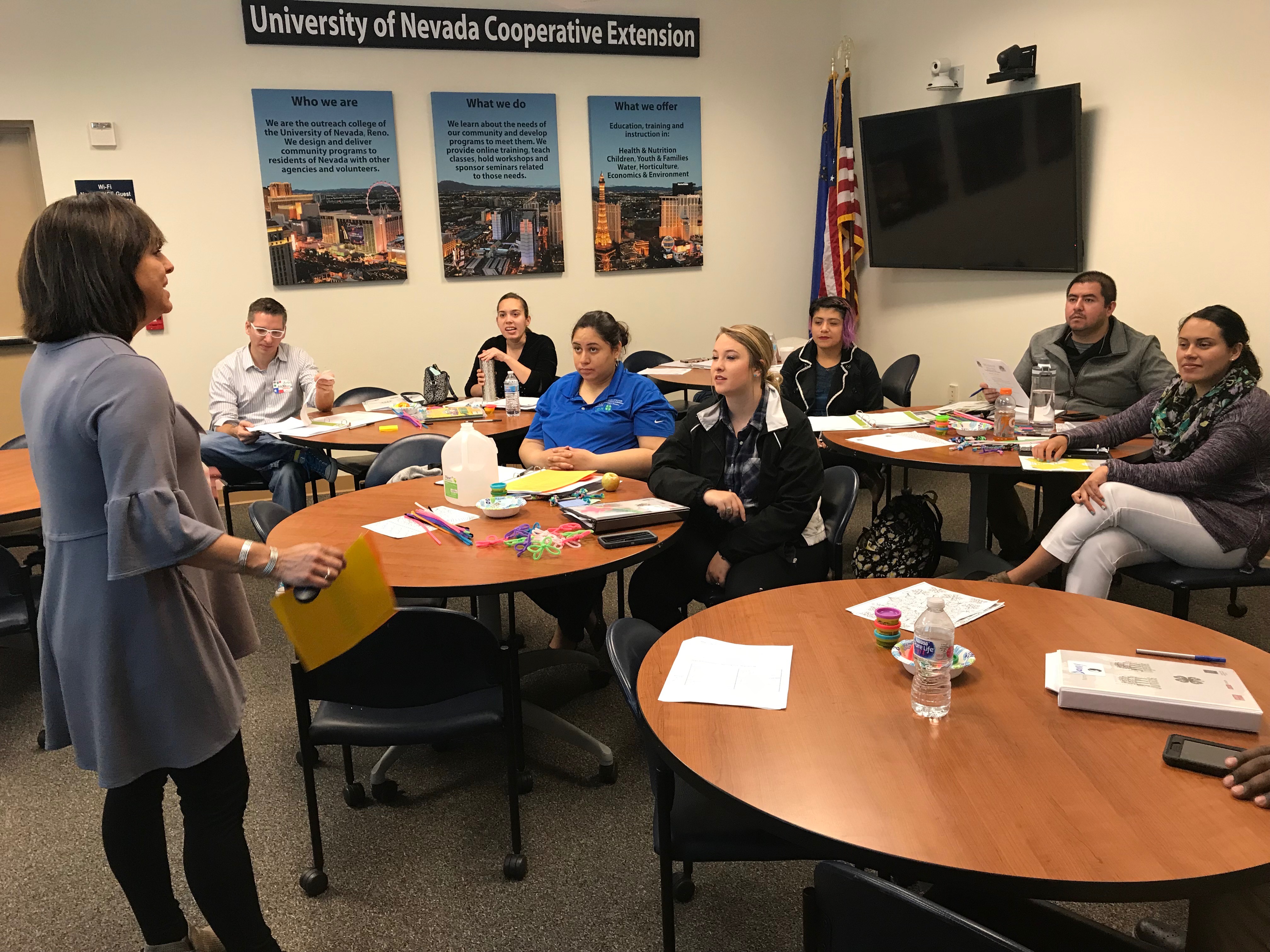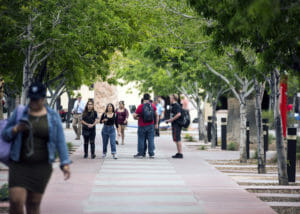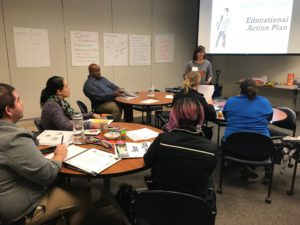A program aims to encourage Latino students, parents, to work together to graduate from college

This story has been translated and edited for clarity from its original Spanish version.
Although there has been progress, earning a college degree continues to be a challenge for many Latino students — 34 percent of Latinos in Nevada have less than a high school education, compared to 9 percent of African-Americans and 5 percent of whites.
A group of professors, educators and nonprofit representatives recently met in Las Vegas to plan how parents, students and community members can work together to lower the dropout rate among Latinos and encourage them to graduate. It’s an urgent situation in places such as the Clark County School District, where Latinos make up 46 percent of the student body.
"The first goal is for students to graduate from high school. The second one is to continue on to higher education," said Adriana Hernandez, a community based instructor at the University of Nevada Cooperative Extension. "Sometimes it is difficult to know what they need to graduate or to enroll in college."

They received training through a program called "Juntos Para Una Mejor Educación” (Together for a Better Education), and it’s part of 4-H, a national initiative that began a century ago as an educational program focusing on rural youth. Created because parents weren’t involved in their children’s education, Juntos has four components: Family Participation, 4-H Juntos Clubs, Training for Success, and a summer program.
Through trainings that took place from March 20-22 in Las Vegas and that were organized by the University of Nevada Cooperative Extension (UNRE), teachers learned how to implement the program in schools with a high population of Latino students from 8th to 12th grades, as well as in nonprofit agencies and faith-based organizations. Some of the topics addressed during the trainings were "making education a family goal," "graduation requirements" and "how to pay for a higher education."
Six attendees, including educators and volunteers with nonprofit organizations, gathered around whiteboards and round tables at a recent training, listening to instructors who explained financial aid options and laid out how to help parents and students create a step-by step plan for getting into college.
The founders of Juntos found that many students, because they are the first ones in their family to finish high school and go on to college while having good attendance and grades, needed more individualized attention. That’s why one of the central tenets of Juntos is ensuring students and parents become familiar with the requirements to graduate.
"This is a program for the entire family, not just for young students and parents, but for schools and the community, because the idea is for them to grow and learn as a unit," said Cintia Aguilar, one of the founders of Juntos who works at North Carolina State University. "We always say the name of the program, ’Juntos’, isn’t simply because we liked it, but because it’s the symbol of this mission."
There can be cultural barriers to building the resume it takes to get in college, organizers said.
"We saw that families were excited and wanted to move forward, but we finished our training and that was it, they didn’t know how to use some of the information we shared with them," Aguilar said. "For example, they had no experience with extracurricular activities, they didn’t have many cultural tools which kept them from participating; that’s why we created a component that focuses on this."
Coming to Vegas
The trainings were coordinated by Aguilar, who is in charge of the "Latino" program at the rural and community development unit in North Carolina State University, and by Andrew Behnke, co-founder and associate professor at that institution.

They both traveled from North Carolina to Las Vegas to share the model they first implemented in North Carolina in 2007, and which has now been extended to Latino communities thanks to joint efforts in Iowa, Oklahoma, Illinois, Oregon, California, New York and Florida.
Hernandez told The Nevada Independent in Spanish that Juntos was created as part of the 4-H program when it became clear that its components were needed in the Hispanic community.
Hernandez said they expect to continue with more training and offer it to high schools, starting at Chaparral High School, as soon as schools request it. Also, some faith-based organizations have already applied for the program.
Brenda Hernandez, a program manager at Planned Parenthood who attended the classes, said the trainings represent a golden opportunity to implement what she learned in the Latino groups she works with.
"I plan to share this training with our promoters so they can begin to have these conversations with their children,” Brenda Hernandez said. "Also with a support group for Latino women who have suffered violence, because several of them have kids in high school. The truth is I haven’t seen such a program, which involves both parents and children."
Education and numbers
According to a 2017 report by Georgetown University, the lack of access to higher education has led to Latino workers largely stagnating in jobs with mid-level wages.
The report also noted that in Nevada, 19 percent of Latinos have some college but no degree compared to 32 percent of blacks and 29 percent of whites; 2 percent have a graduate degree, compared to 5 percent of blacks, and 10 percent whites, 7 percent have a bachelor’s degree, compared to 11 percent of African-Americans and 19 percent of whites.
Data from the Nevada Department of Education indicated that for the class of 2016 the total graduation rate in the state was 73.55 percent. The rates broken out by race and ethnicity show the Hispanic graduation rate was 69.74 percent, while it was 79.88 percent for whites, 56.53 percent for African-Americans, 87.92 percent for Asian Americans and 64.71 percent for Native Americans or natives from Alaska.
